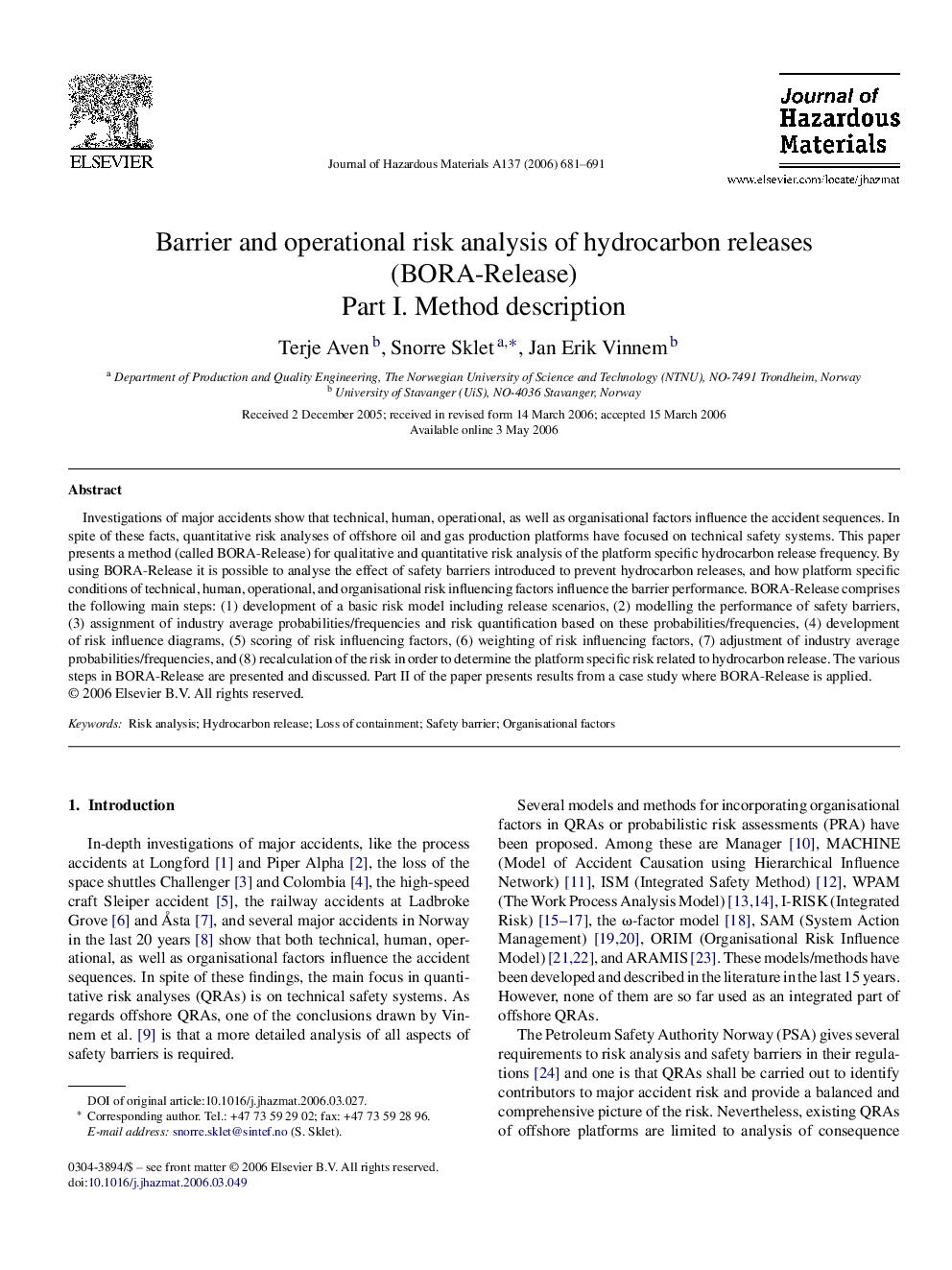| Article ID | Journal | Published Year | Pages | File Type |
|---|---|---|---|---|
| 585312 | Journal of Hazardous Materials | 2006 | 11 Pages |
Abstract
Investigations of major accidents show that technical, human, operational, as well as organisational factors influence the accident sequences. In spite of these facts, quantitative risk analyses of offshore oil and gas production platforms have focused on technical safety systems. This paper presents a method (called BORA-Release) for qualitative and quantitative risk analysis of the platform specific hydrocarbon release frequency. By using BORA-Release it is possible to analyse the effect of safety barriers introduced to prevent hydrocarbon releases, and how platform specific conditions of technical, human, operational, and organisational risk influencing factors influence the barrier performance. BORA-Release comprises the following main steps: (1) development of a basic risk model including release scenarios, (2) modelling the performance of safety barriers, (3) assignment of industry average probabilities/frequencies and risk quantification based on these probabilities/frequencies, (4) development of risk influence diagrams, (5) scoring of risk influencing factors, (6) weighting of risk influencing factors, (7) adjustment of industry average probabilities/frequencies, and (8) recalculation of the risk in order to determine the platform specific risk related to hydrocarbon release. The various steps in BORA-Release are presented and discussed. Part II of the paper presents results from a case study where BORA-Release is applied.
Related Topics
Physical Sciences and Engineering
Chemical Engineering
Chemical Health and Safety
Authors
Terje Aven, Snorre Sklet, Jan Erik Vinnem,
